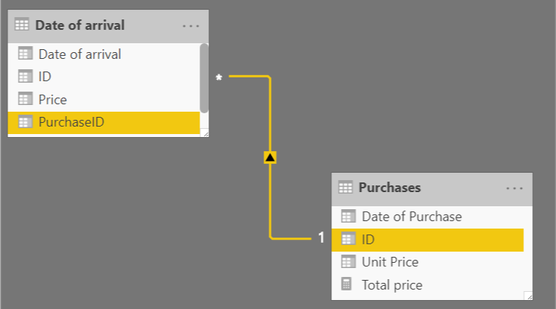Fabric Data Days starts November 4th!
Advance your Data & AI career with 50 days of live learning, dataviz contests, hands-on challenges, study groups & certifications and more!
Get registered- Power BI forums
- Get Help with Power BI
- Desktop
- Service
- Report Server
- Power Query
- Mobile Apps
- Developer
- DAX Commands and Tips
- Custom Visuals Development Discussion
- Health and Life Sciences
- Power BI Spanish forums
- Translated Spanish Desktop
- Training and Consulting
- Instructor Led Training
- Dashboard in a Day for Women, by Women
- Galleries
- Data Stories Gallery
- Themes Gallery
- Contests Gallery
- QuickViz Gallery
- Quick Measures Gallery
- Visual Calculations Gallery
- Notebook Gallery
- Translytical Task Flow Gallery
- TMDL Gallery
- R Script Showcase
- Webinars and Video Gallery
- Ideas
- Custom Visuals Ideas (read-only)
- Issues
- Issues
- Events
- Upcoming Events
Get Fabric Certified for FREE during Fabric Data Days. Don't miss your chance! Request now
- Power BI forums
- Forums
- Get Help with Power BI
- Desktop
- Re: Not showing data properly
- Subscribe to RSS Feed
- Mark Topic as New
- Mark Topic as Read
- Float this Topic for Current User
- Bookmark
- Subscribe
- Printer Friendly Page
- Mark as New
- Bookmark
- Subscribe
- Mute
- Subscribe to RSS Feed
- Permalink
- Report Inappropriate Content
Not showing data properly
I'm new to Power BI, but I've used other BI solutions in the market.
Anyway, I have a situation where I can't seem to work out. I've made a simplyfied example so someone can understand and help me. I've got two tables, one with purchase information such as date of purchase and unit price:
The second table contains information of how many products were bought and expected day of arrival to the costumer:

I tried to make a simple Matrix with these informations, this is what happens:

As you can see, when there is no product for that respective date of arrival, it appears as blank. But, somehow, the unit price is considered in the Total. Also I've done measure called Total price:
Total price = COUNT('Date of arrival'[ID])*SUM(Purchases[Unit Price])
Take the date 01/03/2020: there are 2 products with the value of $100 each and there is a product with the value of $250. The total calculation uses the total sum of unit price and multiply with total count of products sold. So the calculation made is 100+250+50 = 400 (the 50 shouldn't be considered), take this value ans multiply with the total count of products giving: 400*3 = 1200. And I was expecting to calculate like this 2*100 + 1*250 = 450.
For me, this results are weird since I defined the relations between the data.
If someone can help me, I'll be very grateful.
- Mark as New
- Bookmark
- Subscribe
- Mute
- Subscribe to RSS Feed
- Permalink
- Report Inappropriate Content
Hi @Anonymous ,
I am not clear about your requirement, if possible could you please inform me more detailed information(such as your expected output and your sample data (by OneDrive for Business))? Then I will help you more correctly.
Please do mask sensitive data before uploading.
Thanks for your understanding and support.
Best Regards,
Zoe Zhi
If this post helps, then please consider Accept it as the solution to help the other members find it more quickly.
- Mark as New
- Bookmark
- Subscribe
- Mute
- Subscribe to RSS Feed
- Permalink
- Report Inappropriate Content
Either you have move price from one table another like these example
New Column = maxx(filter(table2,table2[Col1]= table1[col1] && table2[Col2]= table1[col2] ),table2[required_col])
New Column = maxx(filter(table1,table1[Col1]= earlier(table1[col1]) && table1[Col1]= earlier(table1[col2]) ),table1[required_col])
Or group data at purchase ID
Something like this
sumx(summarize(Purchase[Purchase ID], "_sum", count(ID), "_price",max([price])),[_sum]*[_price])
But Purchase ID should be in common dim or taken from the master table
- Mark as New
- Bookmark
- Subscribe
- Mute
- Subscribe to RSS Feed
- Permalink
- Report Inappropriate Content
Please see this post regarding How to Get Your Question Answered Quickly: https://community.powerbi.com/t5/Community-Blog/How-to-Get-Your-Question-Answered-Quickly/ba-p/38490
Follow on LinkedIn
@ me in replies or I'll lose your thread!!!
Instead of a Kudo, please vote for this idea
Become an expert!: Enterprise DNA
External Tools: MSHGQM
YouTube Channel!: Microsoft Hates Greg
Latest book!: DAX For Humans
DAX is easy, CALCULATE makes DAX hard...
Helpful resources

Fabric Data Days
Advance your Data & AI career with 50 days of live learning, contests, hands-on challenges, study groups & certifications and more!

Power BI Monthly Update - October 2025
Check out the October 2025 Power BI update to learn about new features.


